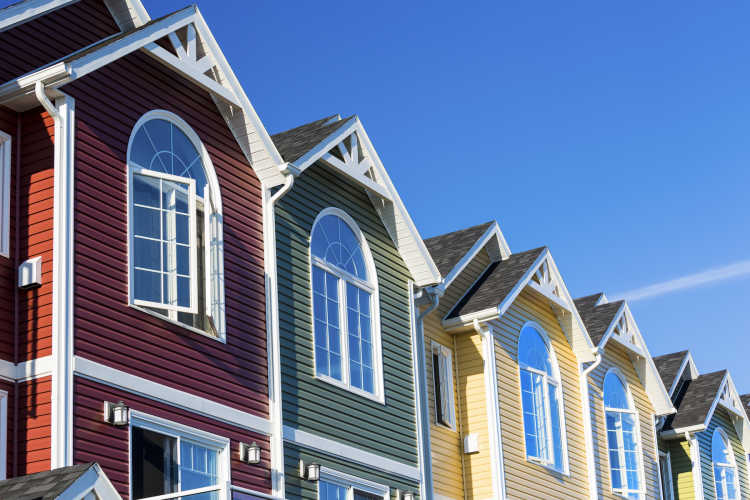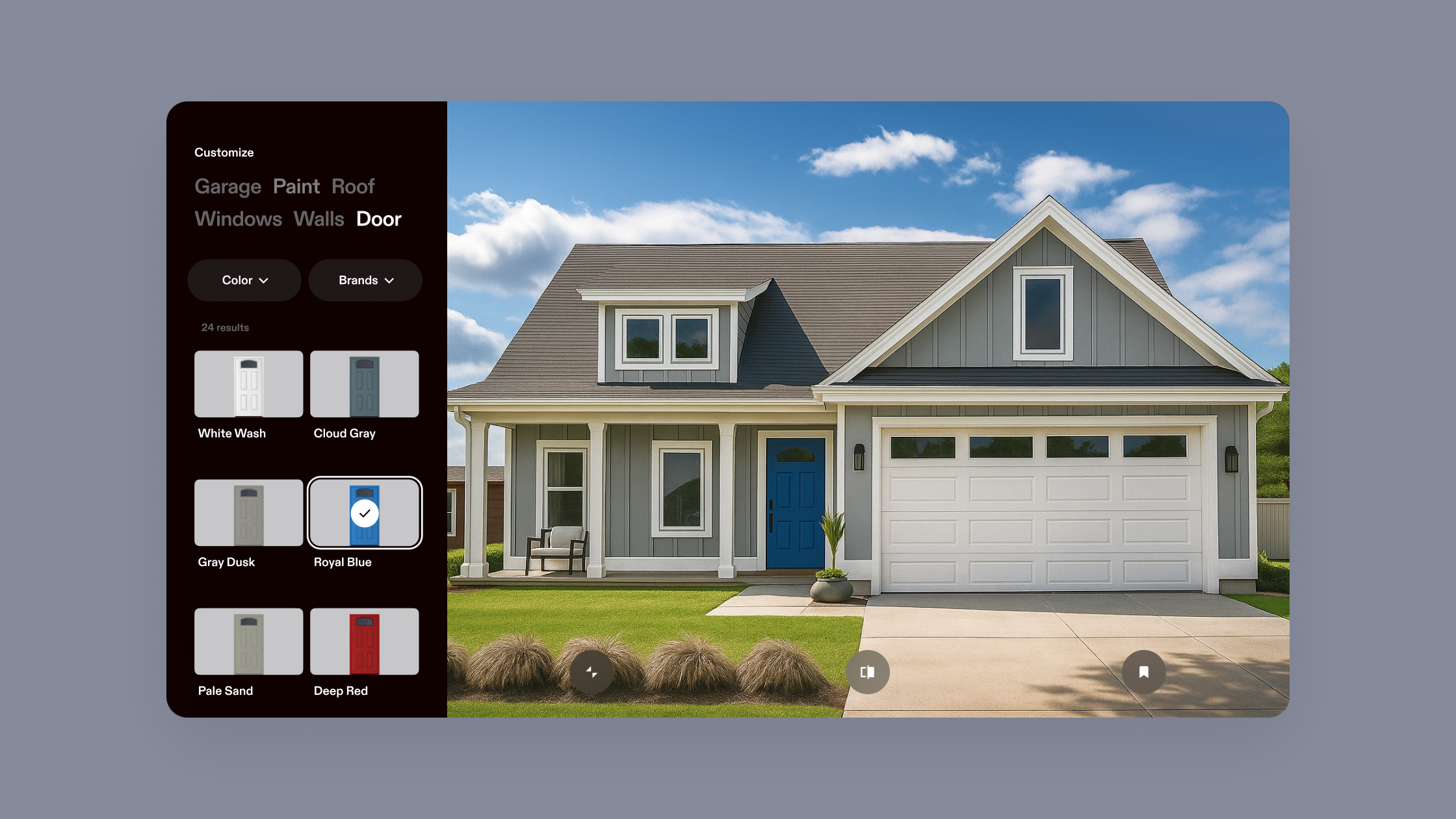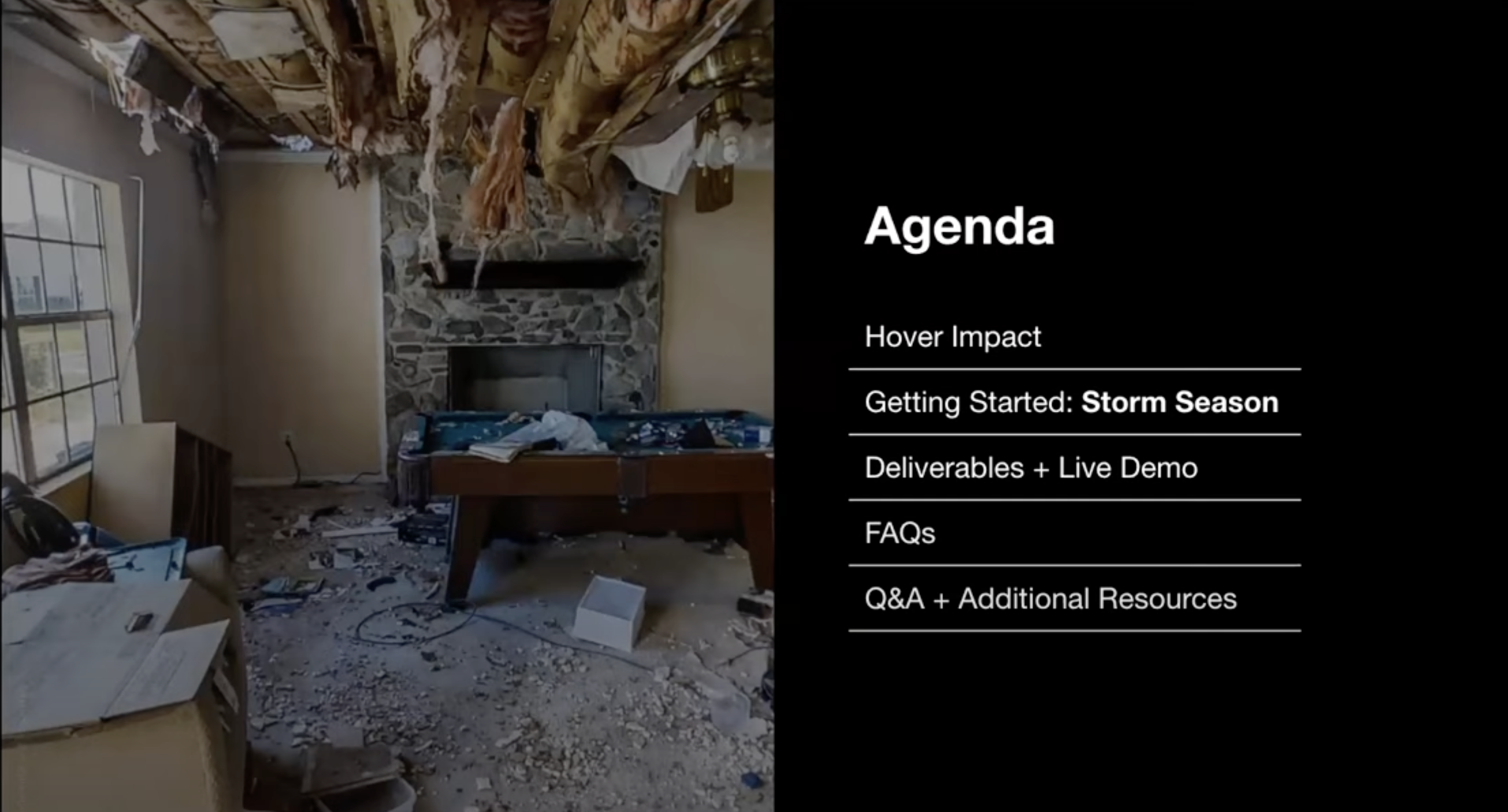Choosing the right siding for your home is more than just a matter of aesthetics. It's a crucial decision that affects your home's protection, energy efficiency, and overall value. With a multitude of siding options available, each offering unique benefits and drawbacks, it's important to understand what each material brings to the table.
Whether you're building a new home or renovating an existing one, selecting the best siding can significantly enhance your home's curb appeal and ensure long-term durability. With Hover, explore the most popular types of siding materials and current trends to help you make an informed decision about what siding you prefer and need.
Types of siding materials and options
When it comes to choosing the right siding for your home, it's important to understand the various materials available and their unique characteristics. Here's a comprehensive look at the main types of siding materials and options:
Vinyl siding
Vinyl siding is one of the most popular choices for homeowners due to its affordability and versatility. Available in a wide range of colors and styles, it can easily complement any architectural design. This type of siding requires minimal maintenance, making it a practical option for those who prefer low upkeep. However, vinyl siding is not as durable as some other materials and can fade over time with prolonged exposure to sunlight. It also doesn't offer the same level of insulation as other options.
Pros:
-
- Affordable and budget-friendly
- Available in a wide range of colors and styles
- Requires minimal maintenance
Cons:
-
- Less durable than other materials
- Can fade over time with sun exposure
- Limited insulation properties
Fiber cement siding (e.g. James Hardie Plank)
Fiber cement siding, such as those found in the James Hardie line, is renowned for its durability and low maintenance requirements. Made from a mix of wood pulp, cement, and sand, this siding can mimic the appearance of wood while offering enhanced resistance to fire, termites, and rot. While more expensive than vinyl, its longevity, and minimal upkeep can make it a cost-effective choice in the long run. However, it is not as energy-efficient as some other materials and requires professional installation due to its weight and composition.
Pros:
-
- Highly durable and low-maintenance
- Fire-resistant and termite-proof
- Can mimic the look of wood without the upkeep
Cons:
-
- Higher cost than vinyl
- Heavy and requires professional installation
- Not as energy-efficient as some other options
Wood siding
For those who appreciate a natural and timeless look, wood siding is a classic choice. It can be painted or stained in various colors to match your aesthetic preferences. However, wood siding demands regular maintenance to protect it from the elements. Without proper care, it can succumb to rot, pests, and warping. Despite these challenges, many homeowners find the charm and beauty of wood siding to be worth the effort.
Pros:
-
- Natural, timeless aesthetic
- Can be painted or stains to suit your design needs
- Adds a warm, organic look to exteriors
Cons:
-
- Requires regular maintenance to prevent rot
- Vunerable to pests and warping
- Expensive compared to synthetic material options
Metal siding (aluminum or steel)
Metal siding, available in aluminum or steel, offers exceptional durability and low maintenance. It is fire-resistant and can withstand harsh weather conditions. One drawback is that metal siding can dent and scratch more easily than other materials. Additionally, it lacks soundproofing and insulation properties, which might require supplementary insulation to improve energy efficiency and noise reduction.
Pros:
-
- Very durable and weather-resistant
-
- Fire-resistant, reducing fire hazards
-
- Low maintenance compared to wood
Cons:
-
- Susceptible to dents and scratches
-
- Limited insulation and soundproofing
-
- Can feel industrial, depending on the home style
Brick siding
Brick siding is a premium option known for its longevity and classic appeal. It can last up to 100 years or more with proper maintenance, providing excellent fire resistance and durability. However, brick siding is expensive to install and repair, and it requires a waterproof sealant to prevent moisture damage. Its weight also necessitates a strong foundation, making it a less feasible option for some homes.
Pros:
-
- Extremely durable, potenitally lasting over 100 years
-
- Fire-resistant and low-maintenance
-
- Timeless and adds a classic look
Cons:
-
- Expensive to install and repair
-
- Requires a strong foundation due to weight
-
- Needs a waterproof sealant to prevent moisture damage
Stone veneer siding
Stone veneer siding offers the aesthetic appeal of natural stone at a more affordable price. It is durable and can significantly enhance the curb appeal of a home. However, if not installed correctly, stone veneers can be prone to moisture issues. Ensuring proper installation and waterproofing is crucial to prevent problems down the line.
Pros:
-
- Aesthetic appeal similar to natural stone
-
- Durable and enhances curb appeal
-
- Lower cost than full natural stone
Cons:
-
- Prone to moisture issues if not installed correctly
-
- Requires professional installation
-
- Less durable than real stone
Composite siding
Composite siding is made from a blend of materials, often including recycled wood fibers and plastic. It is designed to mimic the look of wood without the associated maintenance issues. Composite siding is durable and resistant to rot and insects. However, it is not biodegradable, and its color may fade over time with exposure to the elements.
Pros:
-
- Mimics the look of wood with less maintenance
-
- Resistant to rot, insects, and moisture
-
- Made from recycled materials
Cons:
-
- Non-biodegradable, less eco-friendly
-
- Color may fade with sun exposure
-
- Higher cost than vinyl
Stucco
Stucco siding is popular in warm climates due to its versatility and ability to provide a smooth, seamless finish. It is typically applied in several layers over a lath base, creating a durable and attractive exterior. However, stucco can crack over time, especially in areas with significant temperature fluctuations or seismic activity. It is also not ideal for wet climates, as excessive moisture can cause damage.
When selecting siding, consider factors such as your local climate, budget, desired maintenance level, and aesthetic preferences. Each type of siding offers unique advantages and drawbacks in terms of durability, cost, energy efficiency, and appearance.
Pros:
-
- Smooth, seamless finish adds unique appeal
-
- Durable in warm, dry climates
-
- Low maintenance if properly installed
Cons:
-
- Prone to cracking in fluctuating temperatures
-
- Not ideal for wet climates
-
- Requires multiple layers, increasing labor costs
Most popular siding trends
Keeping up with the latest siding trends can help you make stylish and contemporary choices for your home's exterior. Here are some of the most popular siding trends for 2024:
- Bold & vibrant colors: Homeowners are increasingly opting for bold and vibrant colors to make their homes stand out. Deep blues, lush greens, and fiery reds are among the popular choices that add personality and curb appeal. These striking colors can create a memorable impression and make a home feel more unique. Bold blue, in particular, has become very popular in some regions, offering a fresh and modern look.
- Dark accents: Using dark colors for trim, window frames, shutters, and doors is a growing trend that adds a sophisticated touch to home exteriors. Charcoal, ebony, and other dark shades create a striking contrast against lighter siding colors, enhancing architectural details and adding depth to the overall design. This popular trend works well with both traditional and modern styles.
- Mixing materials & profiles: Combining different siding materials and profiles is a trend that adds texture and visual interest to home exteriors. For instance, pairing metal siding with brick accents or using a mix of lap siding and board and batten can create a dynamic and appealing look.
- Natural wood accents: Incorporating natural wood elements like shingles, trim, or shutters is a trend that adds warmth and rustic charm to home exteriors. Wood accents can complement a variety of siding materials, from vinyl to fiber cement, and provide a cozy, inviting look. This trend is particularly popular in homes aiming for a more organic and earthy aesthetic.
- Modern, clean lines: There's a growing preference for siding with smoother appearances and cleaner lines, moving away from more traditional styles. This trend emphasizes simplicity and minimalism, creating a sleek and contemporary look. Homes with modern, clean-lined siding often feature large windows, open floor plans, and an overall streamlined, modern design.
- Neutral colors: While bold colors are trending, neutral tones like crisp white, sophisticated black, and neutral gray remain popular choices for their timeless appeal and versatility. These colors provide a classic and understated look that can easily adapt to changing design trends. Neutral siding colors also offer a blank canvas for adding colorful accents and personal touches
These trends reflect a blend of modern aesthetics, bold design choices, and timeless elements, offering homeowners various options to enhance their home's curb appeal and express their style.
Why is siding important?
Siding is crucial for several reasons:
- Protection from the elements: Siding acts as a barrier against rain, snow, wind, and other harsh weather conditions, helping to keep moisture out and prevent water damage.
- Insulation and energy efficiency: Proper siding helps insulate your home, reducing heating and cooling costs by maintaining a stable indoor temperature.
- Pest prevention: Well-installed siding helps keep insects, rodents, and other pests from entering your home.
- Structural integrity: Siding protects the underlying structure of your home from deterioration caused by exposure to the elements, maintaining overall stability and longevity.
- Curb appeal and home value: Siding significantly impacts your home's exterior appearance, enhancing curb appeal and increasing property value.
- Low maintenance: Many modern siding materials require minimal upkeep, saving homeowners time and money on maintenance.
- Moisture control: Properly installed siding helps prevent moisture infiltration, which can lead to mold growth, wood rot, and other serious issues.
- Return on investment: Installing new siding typically offers a high return on investment, especially when it comes time to sell your home.
Try Hover Designer to get inspiration and see different siding styles and colors on your home. Working with a contractor? Ask them to use Hover to generate detailed siding measurements of your house and estimate costs. Hover's technology is changing the way that people tackle home home renovation projects. It's a win-win for everyone involved.



